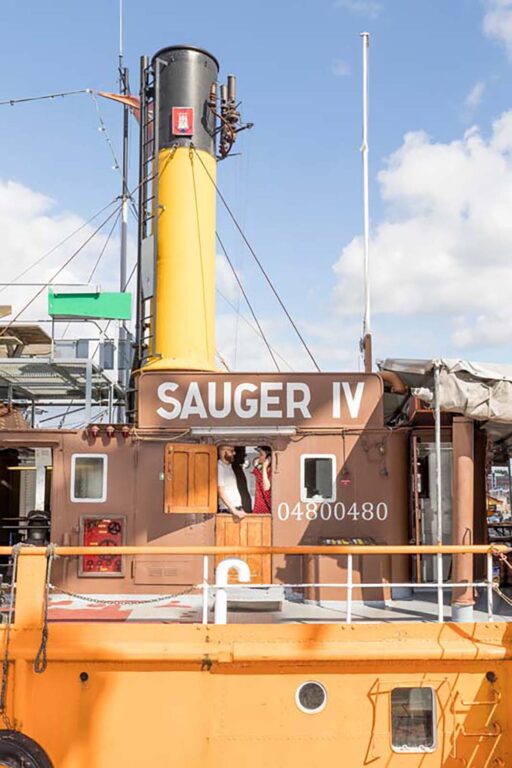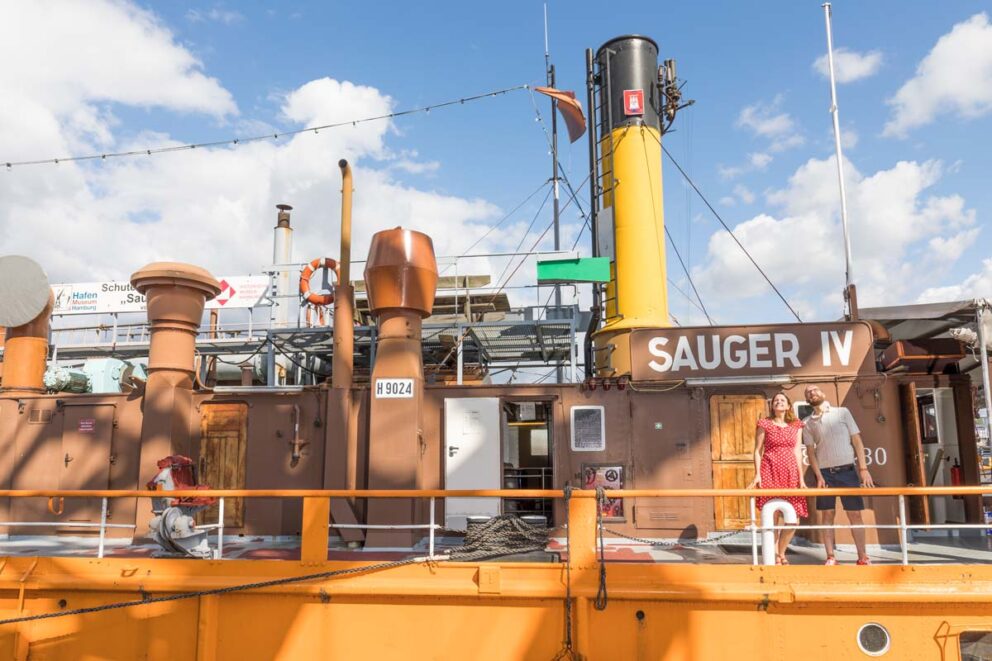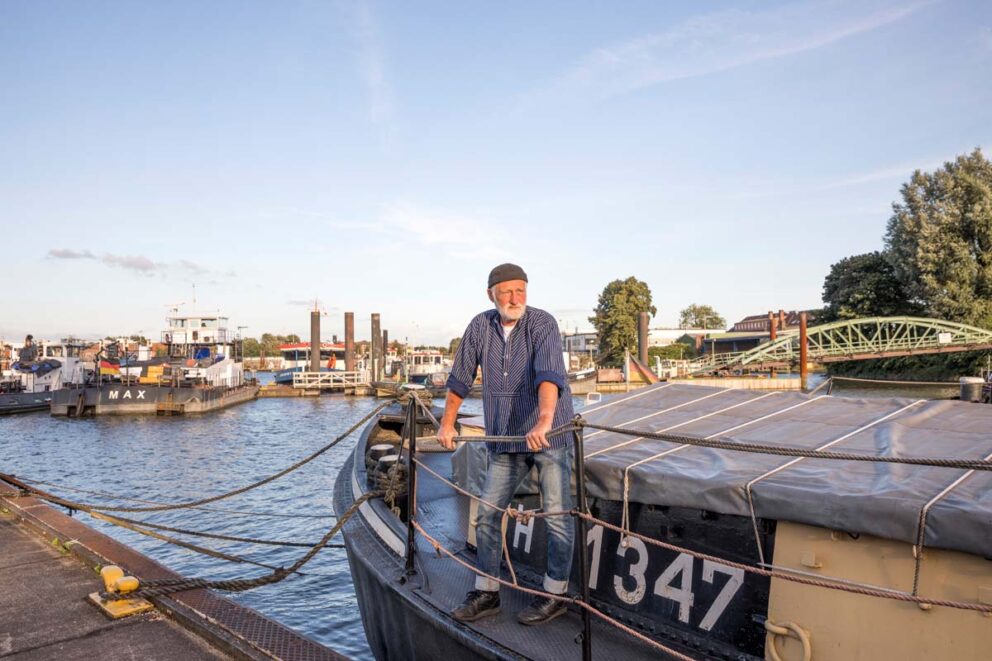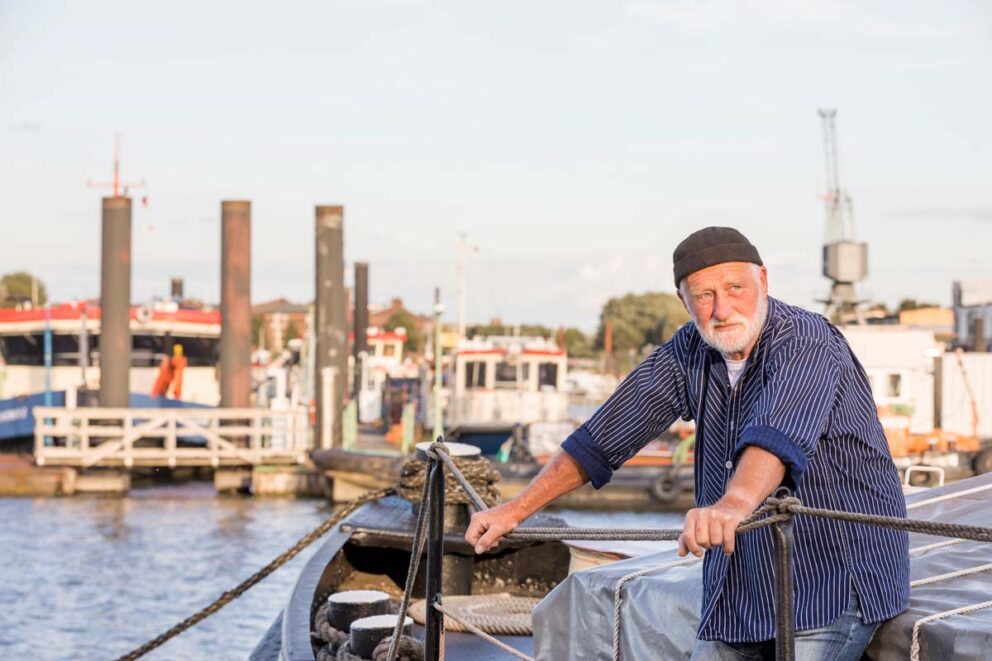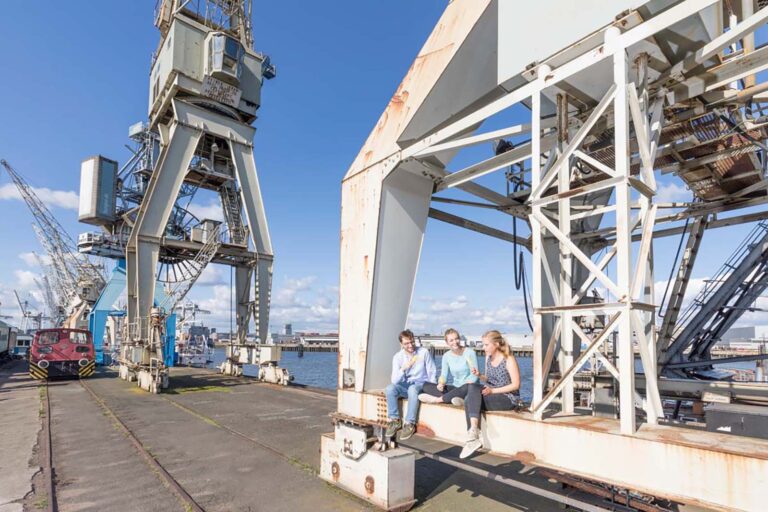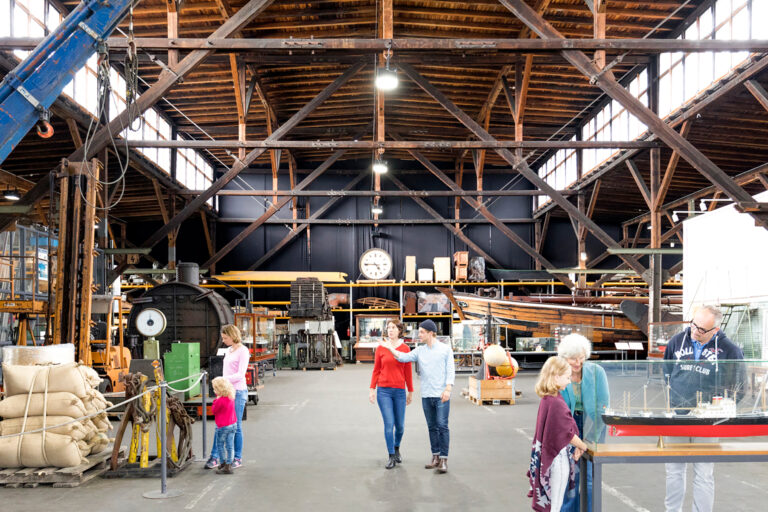
The floating crane Saatsee from 1917 and the steam-powered suction machine Sauger IV from 1909 with their impressive steam engines are started up for special events and presented to the visitors. On the barge H11347 from 1913, there is an exhibition about the Ewerführerei, a nearly extinct job in the port: The conductors of the Ewer, a type of barge without own drive and one of the most important means of transport in the port of Hamburg before the revolution of the container.
On special occasions the pressurized cabin for divers will be demonstared. By phased reducing of over-pressure in the pressurized cabin, up to 5 bars at most, a process of slowly sinking over-pressure is simulated for the diver who exhales slowly the nitrogen in his blood without physical damage.
Highlights

Steam-powered suction machine
“Sauger IV” was built in 1909 by the society for mechanical engineering in Lübeck and has been in operation for rebuilding the port and rivers for 80 years. The suction machine pumped sand and mud, which was dug by excavators from barges to the bank. Up to the time of its shutdown in 1989, it extracted an amount of sand which would raise up Wilhelmsburg, Europe’s largest island in a river, by half a metre. The suction machine fuelled by oil contains a threefold expansion steam engine for the extracting pump and a double expansion steam engine for the water pump. In 1996, the Hafenmuseum took possession of the ship as museum piece, which had been taken out of service. Since then, a voluntary crew takes care of “Sauger IV” and presents it regularly. It is possible to visit the accommodation for 13 people, the galley, two guardrooms and the toilets.

Floating crane Saatsee
The floating crane Saatsee from 1917 has to go to the shipyard for a check-up every 5 years, the last time this happened was in 2021. During the shipyard stay, the floating crane was overhauled with new valves and a new coat of paint and its floatability was certified. The floating object is one of the first objects in the collection, in 1989 the floating crane became part of the inventory of the Museum of Labor and later of the German Port Museum.
The Saatsee was built and used for the Water and Shipping Administration of the Kiel Canal. But not only the floating crane as a large object has been preserved and is fully functional, but also the entire inventory and other ensemble such as tools, life-saving equipment, furniture, crockery, signal lamps, blocks and personal belongings.
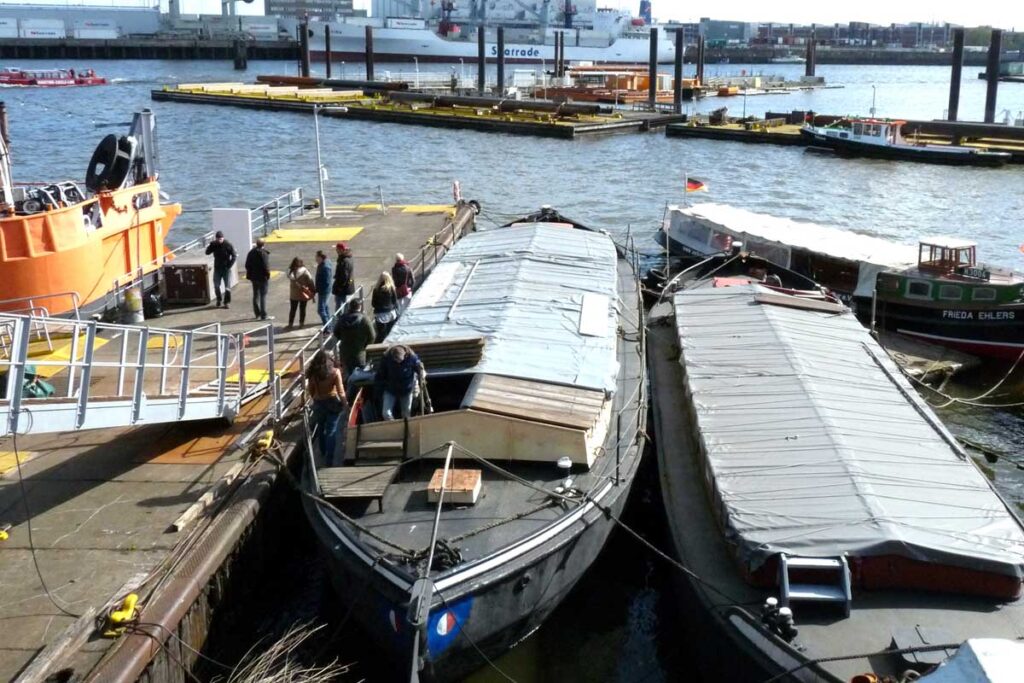
The barge H11347
On the barge H11347 from 1913, there is an exhibition about the Ewerführerei, a nearly extinct job in the port: The conductors of the Ewer, a type of barge without own drive and one of the most important means of transport in the port of Hamburg before the revolution of the container.

PEKING
The four-masted barque PEKING is the first visible object in the collection of the German Port Museum. The four-masted barque, which is more than 100 years old, has been extensively restored and is now moored at the German Port Museum.



